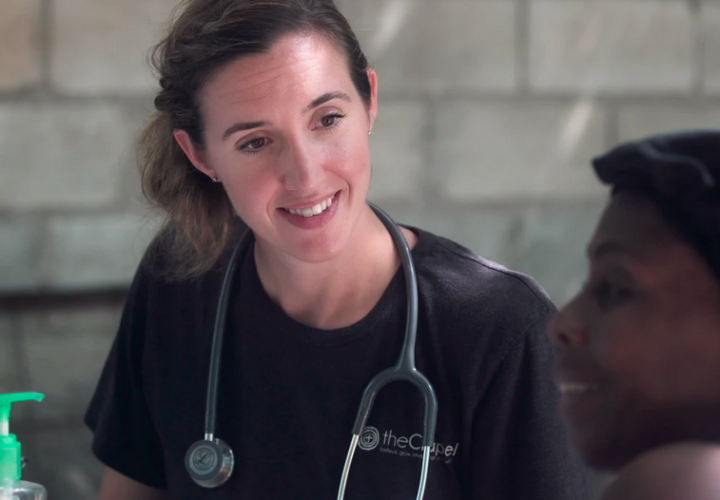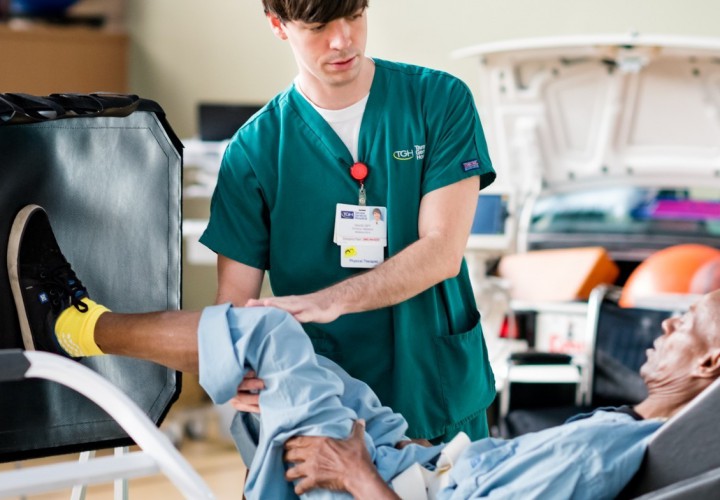While many of our patients have had the pleasure of experiencing the benefits of physical therapy. The scope of physical therapy is still not as understood. Here we will go over the role of physical therapy, and even how that looks like in the Covid-19 era.
Who Are Physical Therapists?
Physical therapists are healthcare clinicians who diagnose and treat patients all throughout the age spectrum, from newborns to older individuals. Physical therapists help in optimizing the quality of life through prescribed exercise, hands-on care, and patient education. They help treat patients who may have had injuries, or have health-related conditions that are affecting their ability to move and restricting their activities. They are considered to be “Movement Experts”.
When a physical therapist examines and evaluates their patients, they are taking patient medical history, performing a review of all medical conditions and medications, and performing tests and measures to create a plan of care that fits best with the patient’s needs. They provide treatments, help re-evaluate progress, modify interventions and activities, and develop and integrate discharge plans. As essential personnel in the healthcare system, physical therapists help lead efforts in rehabilitation, promotion of wellness, fitness and health. Also, prevention of disease, health maintenance, research, and professional/community organizations. Depending on the source of information, the terms “physical therapy” and “physiotherapy,” and the terms “physical therapist” and “physiotherapist,” are synonymous.
What are the education requirements of Physical Therapists
Physical therapists typically require up to 7 years of education to earn a terminal degree (Doctorate/Masters). They also have extensive knowledge on anatomy and physiology of the body, how it interacts with other systems, and the ability to participate in daily activities. As of 2016, all physical therapists receive a Doctor of Physical Therapy (DPT) degree from an accredited physical therapist program before taking the licensure exam that allows them to practice.
Physical therapists also have vast knowledge on health conditions and rehabilitation protocol for patients in any spectrum. All the way from the intensive care unit in the hospital, to nursing facilities, school systems, and sports. They are also well educated on assessing vital signs such as heart rate, blood pressure, and oxygenation levels. Other signs and symptoms they’re educated on include: making sure patients are safe and know when to potentially refer to another medical professional.
Where can you see a Physical Therapist?
Most people may be familiar with seeing physical therapists in outpatient clinics. But physical therapists can work in a variety of settings with a variety of people. These include:
Inpatient rehabilitation facilities
In the acute care setting at the hospital
Skilled nursing, extended care, or subacute facilities
Homes
Education or research centers
Schools
Hospices
Industrial, workplace, or other occupational environments
Fitness centers and sports training facilities
Where is Physical Therapy helping in the Covid-19 pandemic?
As previously stated, physical therapists have vast knowledge of information in treating patients in all spectrums of care. They have a dynamic skill set to able to address the different types of needs of patients. The Covid-19 pandemic has brought on interesting challenges in delivering care. Physical therapists have helped in playing a role for patients who are in the hospital with Covid-19.
Many of the symptoms associated with Covid-19 include severe respiratory distress. This can lead to mechanical ventilation (breathing tube) in order to help keep the body’s oxygen levels high enough. In some patient cases where getting those proper levels of oxygen may be more difficult to attain, guidelines have highlighted the need to perform “prone positioning,”. In other words laying on the belly while being mechanically ventilated. This is to help increase your body’s ability to receive air into the back part of the lungs. Helping achieve this position in the hospital while having multiple IV lines, tubes, and breathing machines can be incredibly challenging. Physical therapists have extensive knowledge on proper positioning for patient safety. They also have joined “prone” teams in the hospital to assist nursing and other healthcare professionals to help with patient outcomes.
Many of these patients are also in the intensive care units for a long period of time. Multiple studies have shown that the longer you stay at the hospital, the higher the risk you have for increased muscle weakness, decreased ability to perform activities, increased risk of falls, and increases the risk of being readmitted to the hospital.
Collaborating
Physical therapists also collaborate with all healthcare professionals in charge of patient care. This helps make sure patients are discharged safely. This includes potential consideration to a skilled nursing facility or home health if you need extra assistance, prescription of devices to make your home safer, and further education on safe transfers. This communication and planning occurs from day 1, when the physical therapist first sees you. And becomes reassessed every time after that. Physical therapists ensure that you can get strong enough in the hospital to be able to go home while being medically safe, but also make sure you stay safe at home.
Discharge
Once discharged from the hospital, patients may require extended time with supervised care in a skilled nursing facility. They may also receive short-term rehab. Patients that require a lot of assistance in getting in and out of bed or getting to the bathroom may require additional time in physical therapy to get strong enough to perform those activities with minimal assistance. Physical therapy consists of increasing the patients endurance, strength, and balance to be able to return home safely.
Once discharged from there, home health physical therapy may visit. This is to continue working on strengthening and improving the ability to perform activities as independently as the patient can. This can include re-training how to get in and out of the bed or a chair safely, how to enter and exit a bathtub or shower, or increasing your endurance to be able to walk from the bathroom to the bedroom, etc. In home health physical therapy, you are typically strong enough to not require as much assistance as you would need in a skilled nursing facility but traveling outside of the home may be more difficult either due to endurance or strength issues, or the patient may have more difficulty with traveling to outpatient clinics.
Outpatient
After home health or the skilled nursing facility, patients may then go to an outpatient physical therapy clinic. Here they continue to work on strengthening, balance, and endurance activities to be able to achieve their prior level of function or increased independence in their activities. Rest assured that no matter where you experience physical therapy at, they are working diligently to make sure you are safe and as independent as possible to help you reach your goals. With recent changes, all of these settings are increasing their safety and wellness precautions to include more frequent handwashing, hand sanitizing, and proper protections to help prevent further spread of disease.
If you think you can benefit from skilled physical therapy services, let us know!


